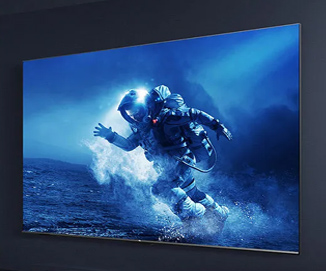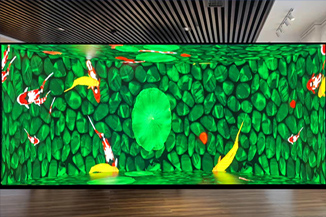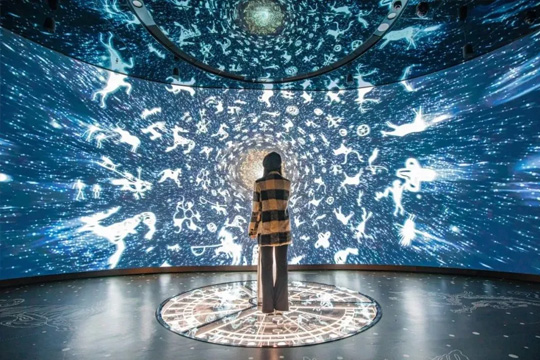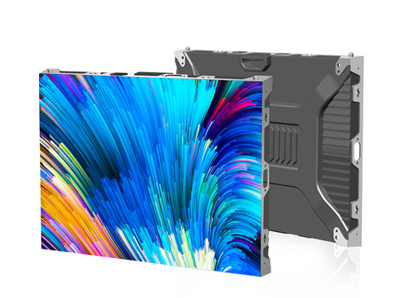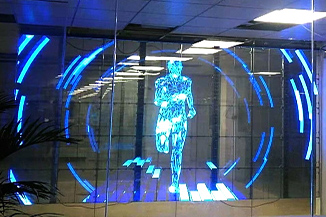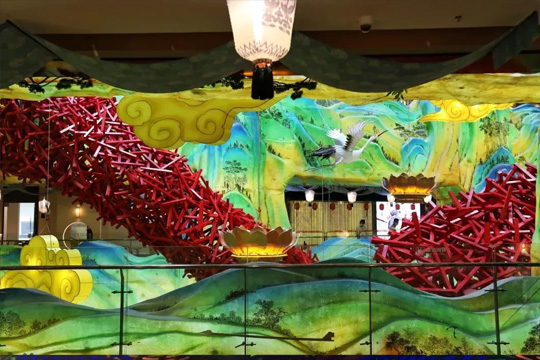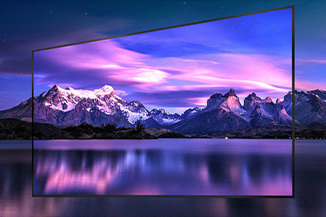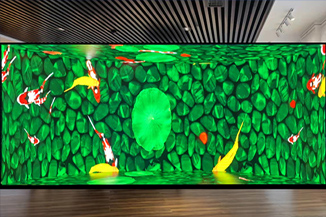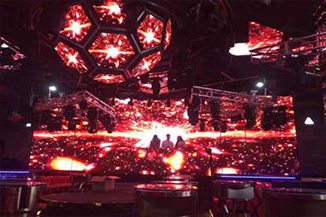Publisher: Supplier of LED Display Time: 2024-10-31 14:38 Views: 864
In today's digital era, LED display has become an indispensable part of our life, whether it is commercial advertising, stage performance, or traffic instructions, information release, can see its figure. The parameters of the LED display, height and width are two vital dimensions, they directly determine the size of the display and display effect, its application scenarios and functions have a far-reaching impact.LCF editor will be in this article in-depth analysis of the mystery of the LED display parameters high and wide.
First, the basic concept of height and width and common size
LED display height and width, refers to the physical size of the screen in the vertical and horizontal direction. Common LED display height and width dimensions are available in a variety of specifications to suit different applications. For example, in small indoor meeting rooms or shop displays, smaller sized displays may be used, such as around 1 metre in height and 1.5 metres in width; whereas in large outdoor advertising screens, the height may reach tens of metres and the width even wider to ensure clear visual effects even at a distance. In general, the common indoor display size of 1.28 × 0.96 metres, 1.6 × 0.96 metres, etc., outdoor display size of 3 × 2 metres, 5 × 3 metres and other options.
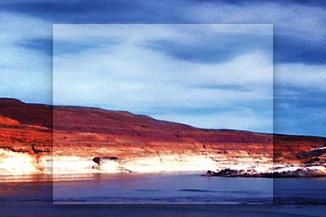
Second, the impact of height and width ratio on the visual effect
(i) Characteristics of different ratios
1.16:9
This is a widely used ratio for video playback and computer monitors, which is in line with the visual habits of the human eye and provides an immersive experience when watching video content such as movies and TV dramas, and the screen will not be obviously stretched or distorted. For example, the LED display used in home theatres with a ratio of 16:9 can perfectly adapt to a variety of high-definition video resources, allowing users to enjoy high-quality audio-visual effects.
2.4:3
Used to be the mainstream ratio of traditional TVs and computer monitors, when displaying some documents, pictures or early video content, it can maintain the original ratio without cropping or distortion of the image. For some occasions where precise data or documents need to be displayed, such as teaching displays in school classrooms and presentation screens in conference rooms, the 4:3 ratio still has its application value.
3.Other Special Ratios
In addition to the common 16:9 and 4:3, there are some special ratios of LED display, such as 1:1 square display, often used in some special art display or creative advertising, can attract the audience's attention, create a unique visual effect. There are also 21:9 ultra-wide ratio displays, which have advantages in gaming and multitasking, and can provide a wider field of view.
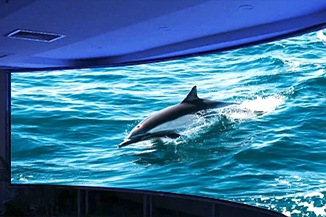
(ii) Impact on viewing experience
A suitable aspect ratio can significantly enhance the viewing experience. If the ratio is not co-ordinated, it may lead to distortion of the screen and affect the clarity and realism of the image. For example, when playing a 16:9 video, if a 4:3 display is used, there will be black edges on the top and bottom or the image will be stretched, making the viewer unable to get the best visual enjoyment. And in some occasions that require panoramic display, such as the live broadcast of large-scale activities, if the width of the display is not enough, it will not be able to fully present the grand scene, and the audience will feel limited vision.
Third, the relationship between high and wide and resolution
The resolution of LED display refers to the number of pixels on the screen, usually expressed as the number of horizontal pixels × the number of vertical pixels. The height and width are closely related to the resolution, in the same display area, the ratio of height and width is different, the best resolution required will be different. For example, a display with a resolution of 1920 x 1080 in a 16:9 ratio will have a sharp display with a richly detailed image; however, if it is changed to a 4:3 ratio, the image may become blurry at the same resolution because the pixel dots are stretched or compressed in the new ratio.
Higher resolution usually requires larger height and width dimensions to support it, to ensure that each pixel has enough space to be displayed, thus presenting a detailed and lifelike image. For large LED displays, such as large outdoor advertising screens, in order to have a clear display even from a distance, not only do they need larger height and width dimensions, but they also need high resolution so that the advertised content is readable and attractive. For example, some high-end outdoor advertising screen resolution can reach 4K or even 8K, height and width of up to tens of metres, able to attract the attention of many pedestrians in the busy business district.
Fourth, the choice of height and width in different application scenarios
(I) Indoor application scenes
1.Conference room
In the conference room, the height and width of the LED display usually need to be based on the size of the conference room and the number of participants to choose. General small conference room can choose the height of 1-1.5 metres, the width of 1.5-2 metres or so of the display, so as to ensure that in the close viewing, text and images are clearly visible. For large conference rooms, you may need a larger size of the display, such as height 2-3 metres, width 3-5 metres, to meet the needs of many people watching at the same time. Moreover, considering that the meeting is mostly to display documents and PPT, the ratio of 4:3 or 16:9 are more appropriate, the specific choice should be based on the layout of the meeting room and the use of habits to decide.
2. Shopping malls and shops
Shopping malls and shops in the LED display screen is mainly used for product display and advertising, its height and width of the choice should be combined with the shop space and display location. If the display is hung on the ceiling, the height should not be too high, usually about 0.5-1 metres, the width can be determined according to the area of the shop and the visual effect, usually between 1-3 metres. In order to attract customers' attention and show the details of the goods, the ratio of 16:9 is more common, which can be better adapted to a variety of advertising videos and pictures.
(II) Outdoor application scenes
1. Outdoor advertising screen
Outdoor advertising screens need to have a large size and high brightness in order to attract the attention of the audience in the bright light and from a distance. The height is usually 5-20 metres or even higher, while the width is determined according to the specific installation location and advertising effect, which may reach tens of metres. As the content of the advertisement is mostly based on video and pictures, the ratio of 16:9 or wider is more adaptable to the needs of modern advertisement, showing more impactful visual effects.
2.Stadiums
LED displays in stadiums are mainly used for live broadcasting and score display. Its height and width should take into account the layout of the audience and viewing distance, the general height of more than 5-10 metres, the width is larger to ensure that the audience can clearly see the screen content. In order to meet the display needs of different competitions, a combination of ratios may be used, for example, in football matches, there may be a larger main display with a ratio of 16:9 for live game screens, surrounded by a number of auxiliary displays with different ratios to display scores, player information and so on.
Fifth, the future development trend
With the continuous progress of science and technology, the height and width parameters of the LED display are also constantly developing and changing. In the future, we can foresee that the LED display will move towards a larger size, higher resolution, more flexible height and width ratio. For example, with the maturity of MicroLED and MiniLED technology, the pixel pitch of LED display will be further reduced, which means that under the same height and width dimensions, higher resolution can be achieved, and the display effect will be more detailed and realistic. At the same time, with the emergence of foldable, bendable and other new display technologies, the height and width of the LED display will no longer be limited to the traditional rectangular shape, there may be more innovative designs to adapt to different application scenarios and user needs.
In short, the height and width parameters of the LED display are the key factors to be considered in its design and application.LCF suggests you to choose the height and width dimensions and ratio reasonably when designing and applying the LED display, to give full play to the advantages of the LED display, and to bring more wonderful and clear visual experience.LCF is a national speciality, speciality, speciality, speciality and new small giant enterprise and national high and new technology enterprise which integrates the research and development, intellectual property, sales, operation and service. enterprise and national high-tech enterprise. If you need to buy LED electronic display friends can also directly contact the LED display manufacturer LCF, the big country brand, trustworthy!
